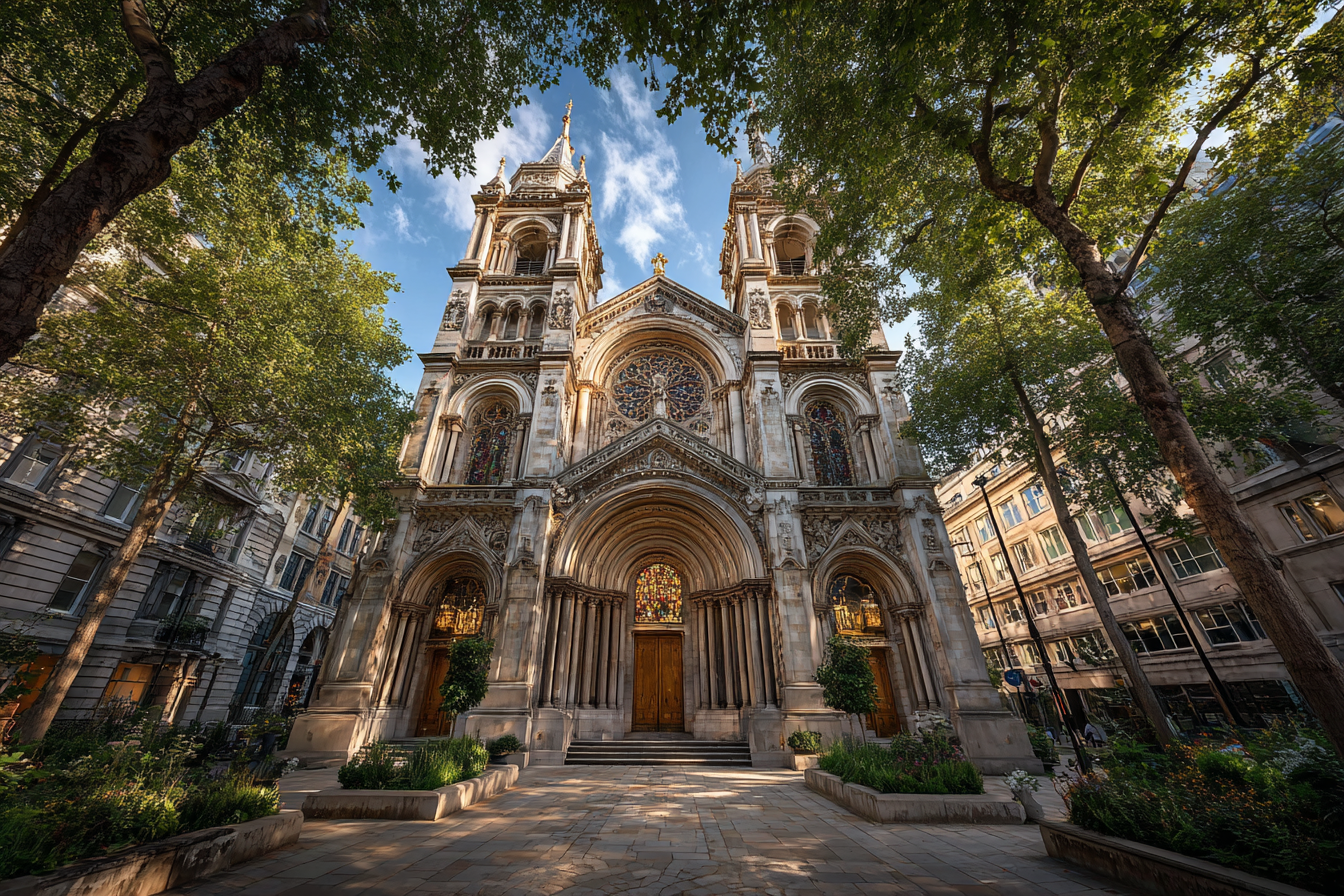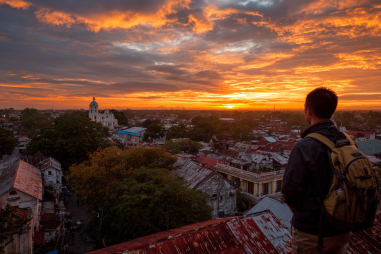Vigan, a UNESCO World Heritage City located in the Ilocos Sur province of the Philippines, offers more than just charming cobblestone streets and ancestral houses. Its rich religious heritage provides a window into centuries of faith, devotion, and community life. The city’s historical and spiritual landmarks paint a vivid picture of the role religion has played in shaping its identity and culture. Whether you’re a pilgrim, history buff, or simply a curious traveler, exploring Vigan’s religious sites promises an experience full of reflection, cultural insights, and architectural marvels.
St. Paul’s Metropolitan Cathedral Highlights
At the heart of Vigan stands the magnificent St. Paul’s Metropolitan Cathedral, one of the oldest and most significant religious structures in the Philippines. Built in the 16th century, this cathedral is sometimes referred to as the Vigan Cathedral. It exhibits a beautiful fusion of Gothic and Baroque architectural styles, which reflect the Spanish colonial influence that shaped much of the city’s development.
Walking inside, you’ll notice the high ceilings, intricate retablos (altarpieces), and massive wooden doors, all serving as a solemn reminder of centuries-old religious traditions. The cathedral is dedicated to St. Paul the Apostle and continues to be an active center of worship, drawing both locals and visitors. It’s particularly famous for its large bell tower and the centuries-old bells that still call the faithful to prayer.
Exploring this landmark, one cannot miss the historical markers that recount the cathedral’s significant events, including natural calamities and wars, which it remarkably survived. This resilience adds to the cathedral’s spiritual aura and historical importance.
Bantay Church and Bell Tower
Just a short distance from Vigan, in the municipality of Bantay, lies another religious gem: the Bantay Church, formally known as the Saint Augustine Parish Church. Built in 1591, this church is renowned not only for its religious significance but also for its iconic bell tower that overlooks the town and offers panoramic views of the surrounding landscape.
The Bantay Bell Tower served multiple purposes over the centuries, including as a watchtower during times of invasion and as a refuge during uprisings. Visitors often climb its steep stairs to enjoy breathtaking vistas of the historic town of Vigan and the nearby Abra River.
Inside the church, the simple yet elegant interiors underscore the purity of faith that has endured in this region. The Bantay Church also has a small museum housing religious artifacts, sculptures, and centuries-old sacred relics, which provide deeper insights into the area’s ecclesiastical history.
Minor Chapels and Pilgrimage Sites
Beyond the major churches, Vigan houses several minor chapels and pilgrimage sites worthy of exploration. These chapels, often tucked away in quieter neighborhoods or countryside, offer intimate spaces for reflection and prayer.
- Capilla de San Antonio de Padua: This small chapel, nestled near the town center, is dedicated to St. Anthony of Padua. It is beloved by locals for its serene ambiance and well-preserved antique carvings.
- Our Lady of the Poor Chapel: A sacred spot where devotees often light candles and seek solace in quiet prayer.
- Pagburnayan Chapel: Located near pottery-making communities, this chapel blends spirituality with local crafts and traditions.
Many pilgrims travel to these sites especially during religious seasons such as Lent and the Feast of the Holy Cross. The quietude and rustic charm of these chapels reveal a different, more personal dimension of Vigan’s faith life.
The Role of Religion in Local Culture
Religion in Vigan is deeply intertwined with the daily fabric of life. Catholicism, introduced by Spanish missionaries, has influenced not only spiritual practices but also social customs, festivals, and even local governance. Religious landmarks are living testaments to this enduring influence.
Families regularly attend mass at their neighborhood parishes, while religious education is embedded in community values. The church often serves as a communal gathering spot, where social connections are nurtured alongside spiritual growth.
Furthermore, religious festivals and ceremonies often include traditional dances, music, and culinary delights, showcasing a beautiful blend of faith and culture. Local artisans and craftsmen have also drawn inspiration from religious iconography, creating ornate statues, rosaries, and textiles that carry sacred symbolism.
Visiting Etiquette and Best Times
If you plan to visit Vigan’s religious landmarks, observing proper etiquette ensures a respectful and enriching experience. Here are some helpful tips:
- Dress modestly: Wear clothing that covers shoulders and knees, especially when entering churches and chapels.
- Maintain silence: These are places of worship; speak softly and avoid disruptive behavior.
- Seek permission: Ask before taking photographs inside sacred areas, as some sites restrict photography.
- Participate respectfully: If attending services or festivals, join with reverence and follow local customs.
The best times to visit are during weekdays or early morning when crowds are minimal, allowing for more peaceful reflection. However, if you want to experience the vibrant religious festivals, then visiting during special feasts such as the Feast of St. Paul or Holy Week is ideal. Expect lively processions, devotional rites, and a bustling atmosphere filled with spirituality and community pride.
Religious Festivals and Celebrations
Vigan’s calendar is dotted with religious festivals that celebrate its rich spiritual heritage. These events offer visitors an immersive experience into the faith and traditions of the locals.
- Feast of St. Paul the Apostle (January 25): Celebrated at the St. Paul Cathedral with masses, processions, and cultural presentations.
- Holy Week (Lent to Easter Sunday): Marked with solemn rituals, the reenactment of the Passion, and pilgrimages to various churches and chapels.
- Bantay Bell Tower Festival: Highlights the historical and spiritual importance of the Bantay Church with special masses and community activities.
- Feast of the Santo Niño (Third Sunday of January): A festive occasion showcasing colorful parades and traditional dances.
These celebrations are often accompanied by vibrant street fairs, local food vendors, and artisans showcasing their crafts, blending religious devotion with joyful community spirit.
Reflecting on Vigan’s Spiritual Heritage
Touring the religious landmarks of Vigan is far more than sightseeing; it is a journey into the soul of a city where history, culture, and faith converge. These sacred sites encapsulate stories of resilience, devotion, and artistic brilliance that have been preserved through generations.
As you walk through the stone corridors of St. Paul’s Cathedral, climb the Bantay Bell Tower, or find quietude in a humble chapel, you connect with a rich spiritual tapestry woven by the people of Vigan throughout centuries. Their faith continues to inspire, making Vigan not just a destination for travelers, but a sacred space for pilgrims and soul seekers alike.
Whether you are there to admire architectural grandeur, participate in vibrant festivals, or find a peaceful moment of reflection, Vigan’s religious landmarks offer a profound and memorable experience that honors the enduring spirit of this historic city.







